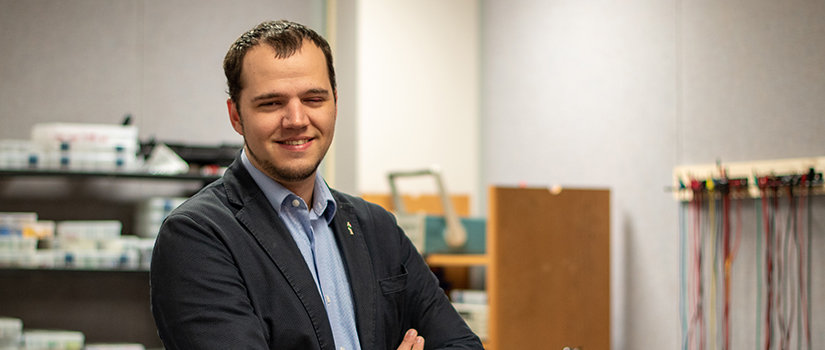By Abe Danaher | October 10, 2019
When President Donald Trump signed executive order 13859 on February 11, 2019, he hoped to usher in a new wave of collaboration and innovation between America’s public, private and academic sectors in the emerging field of artificial intelligence. In doing so, he opened the door for increased federal funding in the field and made possible Austin Downey’s first step into the emerging field of real-time state estimations.
Through a grant from the National Science Foundation, Downey is beginning research on the real-time state estimation of structures experiencing high-rate dynamics. His research, which is being done in collaboration with Computer Science Professor Jason Bakos and faculty at Iowa State, is looking to make a “transformative” advancement in the field by allowing for machine learning to occur at sub-second speeds.
“The work we are doing is not evolutionary,” Downey says. “We are not just trying to be a little bit better than the last people. We are trying to push past that and open up a new field.”
Machine learning has already allowed for the creation of new technologies such as voice assistants, augmented reality and self-driving cars. These technologies have infiltrated homes and lives of millions of people across the world. However, they each share one limitation: the inability to learn on the fly. This limitation is what Downey and his team are looking to change.
“Our goal is to develop second generation machine learning systems that will improve their own accuracy the longer they operate,” Bakos says. “This new type of machine learning processor will employ a set of cooperative models, where one model makes a prediction about the state of the structure while the other retrains itself based on recent observations.”
Although just in its early stages, Downey believes that this project will significantly alter the future of civil structures and military vehicles. The algorithms his team is creating could improve the deployment of seat belts during automobile collisions, bomb-resistant cladding on buildings and shocks inside the seats of military vehicles.
Downey feels that shifting the national focus toward AI and machine learning is an important step for the United States in keeping up with world-wide advancement in the field. He believes that grants similar to his are necessary in developing the ecosystem of engineers and scientists needed to solve challenges on this emerging frontier.
“AI is the automobiles of the 19th century or planes of the 20th century,” he says. “This is what is going to make this century. And the federal government is correct in putting funds toward this.”
